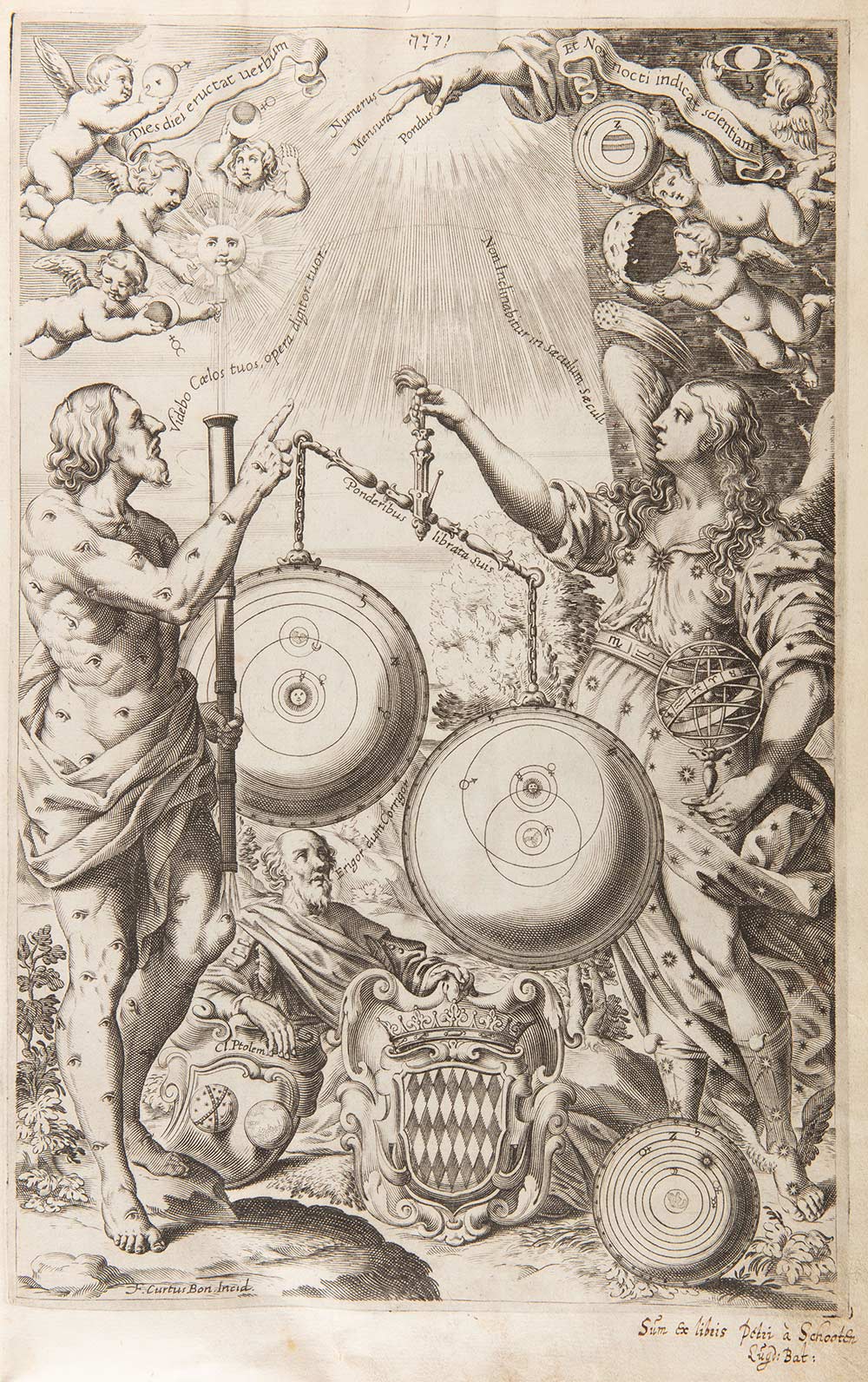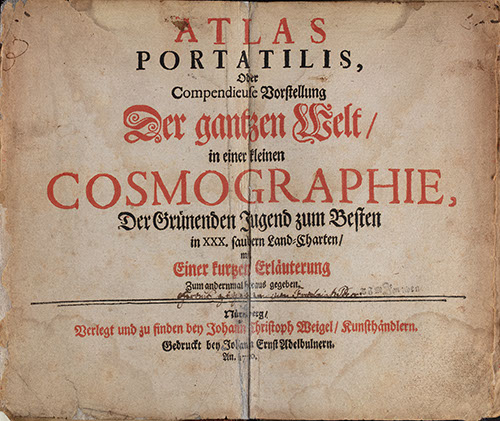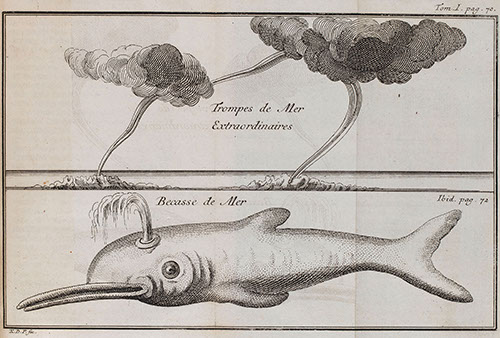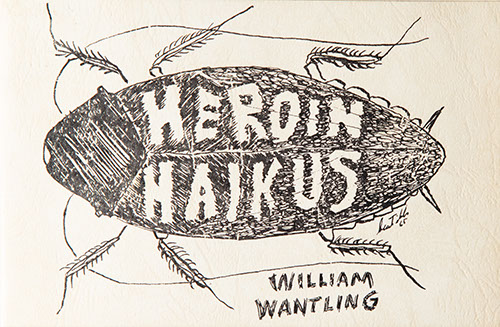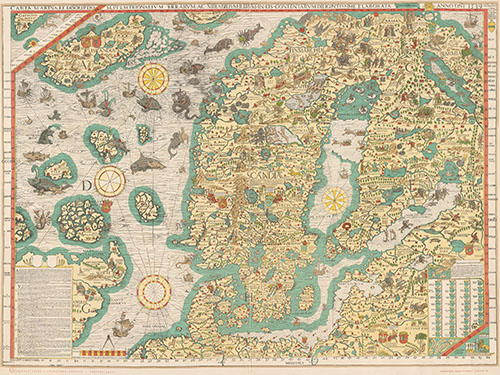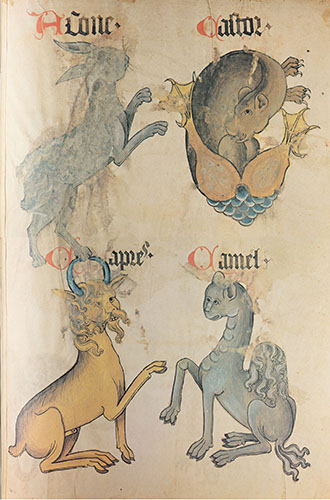Exhibit Contents
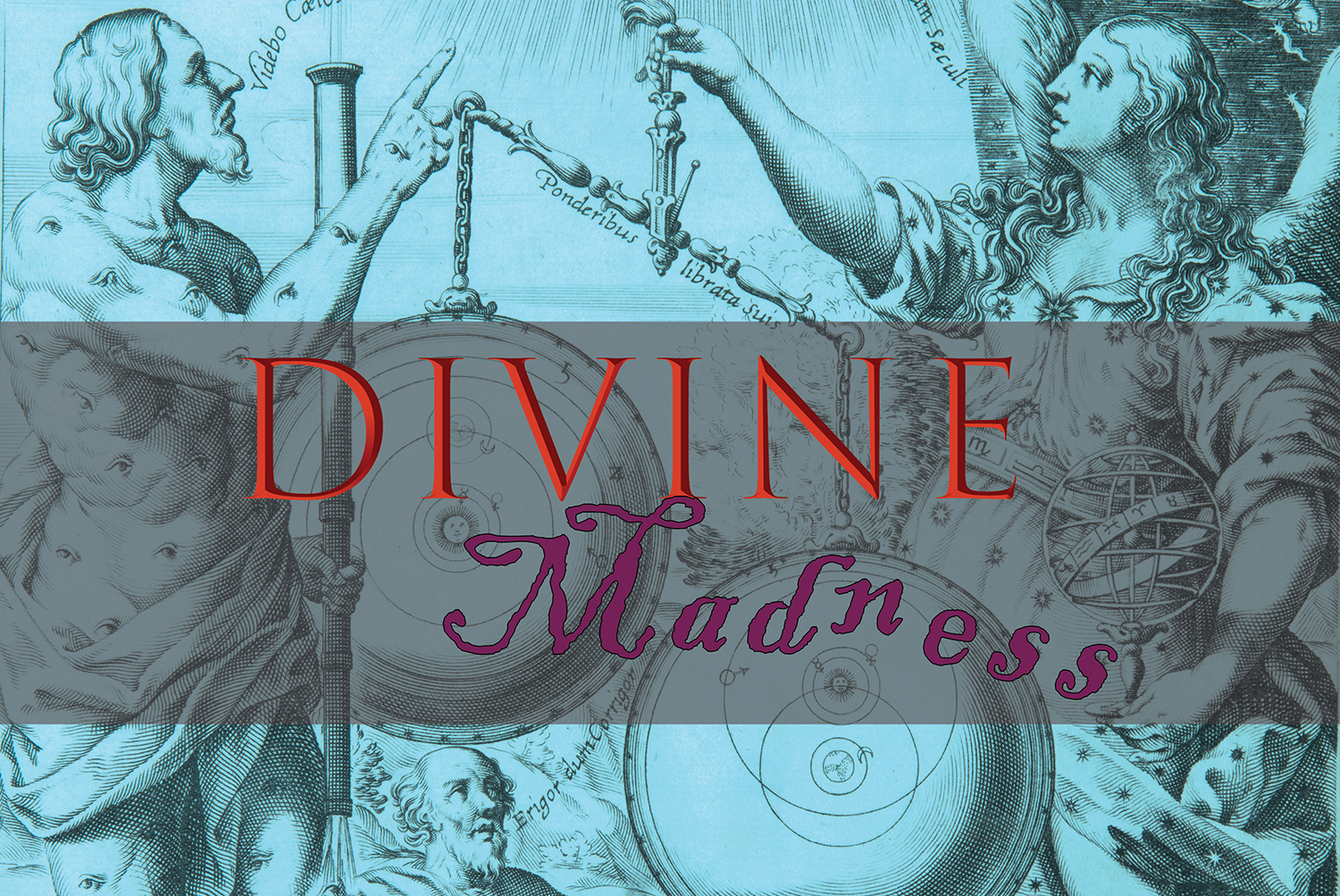
What are the limits of possibility? How far can humans go, physically and intellectually? And what are they prepared to do in order to get what they want?
These are only a few of the questions that Divine Madness attempts to answer. Drawing on ancient and modern texts, the topics examined have numerous intersections geographically, historically, and philosophically. “Sailing with Sea Monsters” and “Fantastic Creatures” look at wondrous beasts, both real and imagined, as people began to travel beyond their nearest, most familiar shores; “Heavenly Bodies” and “Beyond Frontiers” survey explorations in the real world(s) of the Earth and beyond; and finally, “A Gram of Truth” and “The Pursuit of More” investigate the internal experiences that can only be found through profound meditation or chemical experimentation. In short, this exhibit is a collaborative exploration of the inner and outer lives of people as reflected in the expansive collections at the RBML.
The original concept for this exhibit was the broad topic of “travel.” Early conversations between the curators quickly revealed the breadth of possibilities and the appeal this idea held for each of us: travel across land, sea, and stars; internal journeys that could be experiential, intellectual, and moral; the inherent transformations that take place, both great and small, when one goes “there... and back again.” We decided to lean towards the seeming disconnections of our topics and quickly saw many more correlations inherent in these subjects.
The interrelationships of the subjects resulted in our choice to use the visual motifs of the nebula and medieval beehives. The term nebula comes from the Latin word for “mist.” It can refer to a medical condition of the eye in which a clouded spot on the cornea can cause defective vision. Nebula also refers to the interstellar clouds of dust and gas from which stars are born and die.
The Lagoon Nebula, located some six thousand light-years away, was discovered in the seventeenth century by Giovanni Battista Hodierna and is one of only two such star-forming nebulae visible to the naked eye. The connotations of the word "nebula" encompasses a variety of meanings — the size of objects, both great and small; the way we see the world, perfect vision at a great distance and the difficulties of seeing what is right in front of us; as well as birth and death on a literally cosmic scale.
In contrast, the bees and beehives drawn from a medieval manuscript speak to the precision of earthly artistry and to the communal labor of the natural world. Beehives are actually man-made structures built to domesticate the honey production of bee colonies, which would otherwise nest in the wild. Beehives speak to how humanity has consistently chosen to reshape the natural world around us to better accommodate our desires, both artistically and destructively. The gathering scientific consensus shows that honeybee colony collapse disorder arises from artificial pesticides and human-driven climate change. However, the efforts to stem this destruction and revitalize bee populations can be read alongside other efforts to recover from our worst impulses. This can also be seen in our historical analyses of colonialism and social justice.
In essence, we have taken these subjects apart and put them back together again to tell a series of stories that converge at multiple points, both personal and infinite. We hope visitors to Divine Madness will read these curatorial explorations alongside their own journeys.
Travel with us...
Divine Madness was originally a physical exhibit on display at the Rare Book & Manuscript Library from January 24 to May 28, 2020. It was curated by Dr. Cait Coker, Siobhan McKissic, Ruthann Mowry, Ana D. Rodriguez.
